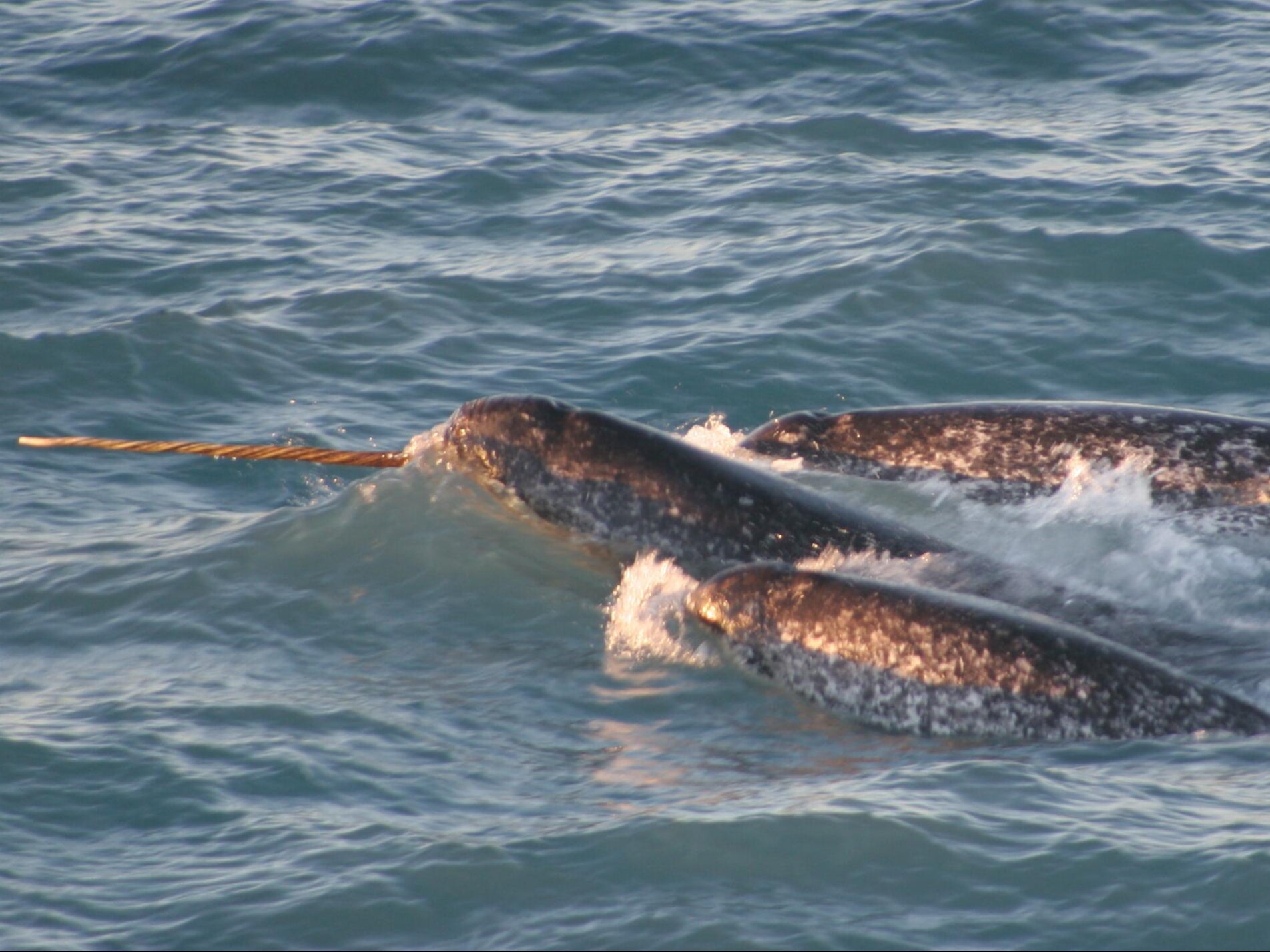Narwhal tusks reveal impact of climate change on Arctic sea ice
Enlarged tooth projecting from upper jaw of males offers window onto life in frozen seas as far back as 1960s
Your support helps us to tell the story
From reproductive rights to climate change to Big Tech, The Independent is on the ground when the story is developing. Whether it's investigating the financials of Elon Musk's pro-Trump PAC or producing our latest documentary, 'The A Word', which shines a light on the American women fighting for reproductive rights, we know how important it is to parse out the facts from the messaging.
At such a critical moment in US history, we need reporters on the ground. Your donation allows us to keep sending journalists to speak to both sides of the story.
The Independent is trusted by Americans across the entire political spectrum. And unlike many other quality news outlets, we choose not to lock Americans out of our reporting and analysis with paywalls. We believe quality journalism should be available to everyone, paid for by those who can afford it.
Your support makes all the difference.Just like the rings of a tree trunk, a narwhal's spiralled tusk has new layers added to it each year, revealing the dietary habits of the animal and the speed with which Arctic sea ice is melting, a study has found.
An international team of researchers studying tusks from 10 narwhals living in northwest Greenland discovered that the layers held vital clues not only about where and what the whales had eaten, but also about the state of the environment throughout their roughly 50-year lifespan.
The unicorn-like tusk, a canine tooth that projects from the left side of the upper jaw of males, is believed to help narwhals obtain food.
Researchers analysed mercury and stable isotopes of carbon and nitrogen in the tusks to give information about what the whales ate in each year of their lives, and how the ice cover and the impact of potential toxic compounds such as mercury had changed over time.
The tusks offered a window onto life in the Arctic as far back as the 1960s.
“It is unique that a single animal in this way can contribute with a 50-year, long-term series of data,” said study lead Professor Rune Dietz, from Aarhus University in Denmark.
“It is often through long time series that we as researchers come to understand the development of biological communities, and such series of unbroken data are very rare. Here, the data is a mirror of the development in the Arctic.”
The composition of the carbon and nitrogen isotopes in a layer of tusk provided scientists with an insight into the diet of each narwhal in the year from which the actual layer originated.
This provided clues about how high in the food chain the prey was, and in which part of the ocean the animals lived.
”What we found in narwhal of northwest Greenland is consistent with a more general trend across the Arctic where sea ice is declining and changing the spatial distribution of sub-Arctic and Arctic fish as well as top predators,” said Jean-Pierre Desforges, a post-doctoral research fellow at Canada’s McGill University, who co-led the study.
“The big question now is how these changes will affect the health and fitness of key Arctic species in the years to come.”

Among the biggest threats to Arctic predators such as the narwhal are climate change and the consumption of mercury.
For the narwhal, the loss of sea ice means losing vital protection against predators such as orca.
Studying the tusks, the researchers found that until about 1990, the narwhals' food consisted particularly of prey linked to the sea ice, including halibut and Arctic cod. During this period, ice cover in the region was extensive.
From 1990 until 2000, ice in northwest Greenland began to decline and the diet of the narwhals shifted to open-ocean prey such as capelin and polar cod. Narwhals accumulated small quantities of mercury as the new items of prey sat lower in the food chain.
However, from about 2000, the amount of mercury increased significantly in the narwhal tusks without a simultaneous shift in food items.
The researchers attributed this to extensive emission of mercury primarily from coal combustion in southeast Asia.
They said the rise in mercury might also be due to a warming climate leading to changes in sea ice conditions in the Arctic, causing the environmental mercury cycle in the Arctic to shift.
“The narwhal is the Arctic mammal most affected by climate change,” said Mr Dietz.
“At the same time, whales lack the physiological properties to eliminate environmental contaminants.
“They don’t get rid of mercury by forming hair and feathers like polar bears, seals and seabirds, just as their enzyme system is less efficient at breaking down organic pollutants.”
The research team said other valuable information was waiting to be analysed in other types of biological material, from teeth and hair to whale baleen and earwax plugs.
“With our new discoveries, we now know that there is a bank of data in the narwhal tusks found in museums around the world,” said Mr Dietz.
“By analysing them, we can hopefully get an insight into the narwhals' food strategy from different areas and periods many years back in time.
“This will provide us with a solid basis for evaluating how the species copes with the changed conditions that it now encounters in the Arctic.”
The study was published in the journal Current Biology.




Join our commenting forum
Join thought-provoking conversations, follow other Independent readers and see their replies
Comments